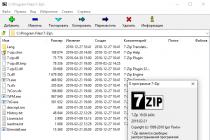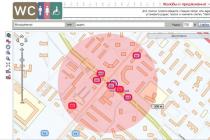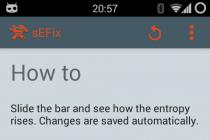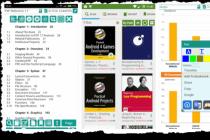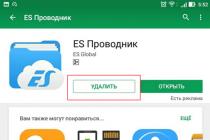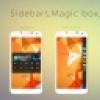Even if you are often near a power outlet, a smartphone that went down at the wrong time can create many uncomfortable moments. What if it’s time to get out and the battery hasn’t had time to charge? Or when you forgot to put your gadgets on charge in the evening, and in the morning they greet us with alarming discharge signs? Of course, you can always use external battery, but you also need to have time to charge it. And it usually takes so long to charge ...
Manufacturers of batteries and gadgets are well aware of this problem - and are successfully solving it with "fast" charging technologies. Let's take a quick look at modern technologies fast charging, especially since they continue to develop rapidly in 2017. At MWC 2017, Meizu has unveiled the fourth generation of its fast charging technology, Super mCharge.
Super mCharge
Super mCharge technology allows you to fully charge your smartphone with a 3000mAh battery in just 20 minutes. How fast is it? Equipped with this technology, the Meizu prototype is 11 times faster than the speed charging iPhone 7 Plus and was 3.6 times faster Samsung Galaxy S7 Edge. Still, after all, in 5 minutes you can charge the gadget by 30%!
To achieve this result, the High Voltage Direct Charge (HVDC) method is used. The Super mCharge power adapter supplies 11V at 5A. This means that the maximum transmitted power reaches an impressive 55 watts. A regular charging cable cannot transfer such power - so to use Super mCharge you will need not only a smartphone and an adapter with support for this technology, but also a separate high-power cable.
A separate plus - the heating temperature of the battery case with such "turbo charging", according to Meizu promises, will not exceed 39 °, which will allow you to work comfortably with your smartphone, even while charging from the mains.
Quick Charge

For several years now, Qualcomm has been releasing chips that are compatible with its own fast charging technology. Quick Charge... Its support is provided either by using a separate chip in the system, or by a compatible Snapdragon chip. For this reason, Quick Charge technology is supported not only by Android smartphones with a Snapdragon chip, but also separate external batteries - in particular, models from Xiaomi.
In 2018, the fourth generation of Quick Charge 4.0 appeared, compatible with the USB Power Delivery (USB-PD) protocol via the USB Type-C port. But also previous versions Quick Charges don't lose their relevance - they can reduce battery charging time by up to 75%. Due to the popularity of Snapdragon chips, support for this technology can be found in many flagships of various brands. Quick Charge 3.0 technology is backward compatible with previous ones - so if your gadget supports Quick Charge 2.0, Charger with the third version it will fit.
Quick Charge adapters charge your device faster by allowing the device to accept more voltage and current. If you connect Quick Charge to your old device, nothing bad will happen, but the gadget will charge at the same rate. As with Super mCharge, fast charging requires not only support for the technology on your gadget, but also an appropriate charger. You can use a regular cable - and you can quickly charge not only your smartphone, but also an external battery!
Super Charge, Turbo Charge, Pump Express, RapidCharge, FastCharge, VOOC Flash Charging

Each manufacturer strives to implement its own fast charging option for their devices. Alas, in anticipation of the "nano" or "graphene" battery technologies promised to us by scientists (which, in theory, can be charged instantly), all current solutions have been implemented according to a single technical solution - an increase in throughput and current strength.
OPPO with proprietary VOOC Flash Charging technology can be mentioned as an example of an alternative solution. Thanks to the eight-pin battery, each of the internal cells is charged in parallel, with a current of 4.5 amperes and a voltage of 5 volts.
Pump Express works by analogy with Quick Charge, but only with MTK processors, and Huawei's Super Charge boasts high-speed charging records (but only in its flagship devices).
Instead of conclusions
When choosing fast charging technologies, ask which ones your gadget supports. And if you have an iPhone or your smartphone does not support any of them - it does not matter, just choose a suitable external battery with fast charge support, add it with the one you need. network adapter and you will definitely not be left without communication at the most inopportune moment. And if you already have an external battery, choose a charger that supports a 2.1A charge current, so your iPhone will charge faster.
Aukey Wall Charger is a charger that allows you to recharge the batteries of all devices in one place. 4 USB outputs provide simultaneous charging of four devices. This charger is suitable for both home use and travel, because it has a compact size and foldable design.
- Fast charging
- Built-in fuse
- Four ports
- Universal memory
- Connector for USB-C connections
- Quick Charge 3.0 technology
- 5 ports
- Powered by mains
- Compactness and high performance;
- Charge LED indicator;
- Qualcomm Quick Charge Technology
- Overheating, overvoltage and short circuit protection
- Three USB downstream connectors
- Wide input voltage range
- Informative display
- Charge current: 7.2 A;
- Total power: 36 W;
- Integrated line filter
Other
With the release of each new generation of smartphones, processors are getting faster, screen resolutions are getting higher, applications are getting more voracious, and batteries ... Batteries are still the same. To somehow compensate for this shortcoming, manufacturers use fast charging technologies. But, in addition to the advantages, they can bring a lot of problems to the smartphone owner - from banal incompatibility and reduced battery life to burned out smartphones and power supplies.
Today, a wide range of charging protocols are available to us, developed and promoted by various companies and organizations. If possible, we will try to adhere to the chronology.
Normal USB
USB allows a current of no more than 500 mA at a voltage of 5 V. Only much later, with the release of the USB 3.0 specification, the maximum current was raised to 900 mA. Ordinary push-button phones, which began to come out not with their own connectors for charging, but with mini- and then microUSB plugs, had quite enough power.
Everything changed with the release of smartphones, the battery capacity of which was several times higher than the relatively small battery capacity. push-button telephones... Even small by modern standards batteries with a capacity of 1500 mAh already wanted to charge faster than in 4–4.5 hours (time taking into account losses during charging and natural slowdown of the charge rate after 80%). There was a need to somehow transfer a larger charge current through a standard cable, while not accidentally burning the USB controller if the device is connected to a computer.
USB Battery Charging Revision 1.2 (BC1.2)
This standard was adopted back in 2011 and allowed early devices to charge from USB connectors with a current of up to 1.5 A at a voltage of 5 V. The standard is adopted by the USB-IF organization, so its use is free for manufacturers. By modern standards, it is very primitive: the type of charger is determined by the voltage at the contacts D + and D-.

Quick Charge is a technology to increase the standard USB specification voltage and amperage from the power supply to speed up the charging of your phone or tablet battery. Fast charging modes vary by technology. Support for fast charging is implemented in smartphones and Samsung tablets Galaxy, ASUS ZenFone, Google NEXUS and a certain number of other devices.As you know, the standard USB 2.0 port supports powering devices up to 2.5 W (5 V and 0.5 A). In turn, the USB 3.0 port can provide power to the device with a power of 4.5 W (5 V and 0.9 A). In my time Apple set the trend for charging from more powerful power supplies - the first generation iPad required, that is, 5 V and 2 A. When connected to a regular USB port of a computer, the iPad did not even show that charging had started. Charging, of course, went on, but so slowly that it was impossible to charge the tablet even for a whole day.
Today, most smartphones are capable of being charged from 5-watt chargers with USB output and tablets - use up to 2.1 A from a 5 volt charger. How many Amperes to take from the USB port of the charger is decided by the battery controller of a smartphone or tablet, so it is quite safe to connect a smartphone to a 5 V / 2 A charger - the controller uses as much current as it needs to charge.
So, in order to quickly charge modern gadgets, such as a smartphone or tablet, well-known manufacturers of mobile platforms have developed special technologies.
Qualcomm introduced the fourth version of the technology Quick Charge 4, and MediaTek, in turn, presented two specifications Pump Express and Pump Express Plus.

The essence of these technologies is to charge the battery of a smartphone or tablet as quickly, efficiently and safely as possible. To support every technology, mobile device, including the battery controller, must be compatible with it. Of course, a certified charger is required that can "speak the same language" with the battery controller of a smartphone or tablet.
Each of these technologies uses the same techniques - either increasing the current, or raising the voltage, or both. Qualcomm pioneered fast charging - introduced in February 2013 Quick Charge 1.0... Devices supporting this technology are capable of charging at 5 Volts and using 2 Amperes. As you can imagine, tablets with Quick Charge support began to charge as fast as iPads, and smartphones - almost twice as fast as others.
Next generation Quick Charge 2.0 allowed to use for charging overvoltage up to 12 volts. More precisely, for QC 2.0, you can choose from three fixed voltages: 5 V, 9 V and 12 V (optional, 20 V chargers are also available). At the same time, the maximum power of the power supply unit can reach 18 W.
Quick Charge 3.0 appeared in processor-based devices Qualcomm Snapdragon 820, 620, 618, 617, 430 and newer. Differs in increased efficiency and intelligence. The compatible charger is capable of dynamically changing the voltage from 3.2 V to 20 V in 200 millivolt steps. The current strength is also dynamically changing. Moreover, changes in the power supply configuration continue during the charging process - the current strength decreases as the battery is charging in order to save its resource. In particular, because of this, the last 20-30% of charging occurs noticeably slower. The power of Quick Charge 3.0 power supplies remained at the same level - 18 W maximum, however, it charges gadgets a little faster, due to better process optimization.

As you can see, the advantages of the technology are obvious - according to the manufacturer, in 30 minutes you can charge your smartphone more than half. More accurate figures sound like this: the 3300 mAh battery was charged up to 60% in 30 minutes. An impressive result, isn't it? In addition, the manufacturer claims that Quick Charge 3.0 is twice as fast as the first generation Quick Charge, which is generally logical. We also note that all three generations of the technology are backward compatible, that is, a power supply of any generation will be able to quickly charge a device of any generation. Of course, a first-generation PSU won't charge as fast as a QC 3.0-enabled PSU.
With the announcement Qualcomm processor Snapdragon 835 appeared information and about Quick Charge 4.0... 20% faster and 30% more efficient. Able to give 5 hours of operation in 5 minutes of charging.

Note that the technology implemented in the chargers is not at all demanding on the type of cable - you can use ordinary USB Type micro B, USB Type C cables or cables with a proprietary connector from the manufacturer of the gadget. It should also be noted that fast charging is fast only up to about 80% charge. And up to 100% the battery will be recharged for a long time to avoid damage to the battery.
As for fast charging technologies MediaTek Pump Express and Pump Express Plus- Little is known about her. More precisely, there are very few smartphones and tablets, as well as chargers themselves with the support of this technology. The essence does not change from this. Pump Express allows you to charge devices using a voltage of 3.6 - 5 volts and a charging current of no more than 2 amperes. That is, this technology is designed to compete with Quick Charge 1.0. In turn, Pump Express Plus allows you to use various voltages of 5 - 7 Volts, 9 Volts and 12 Volts, and the output current can reach 3 Amperes. True, MediaTek does not say anything about 5 Volts and 3 Amperes. But there is a mention of 9 V and 1.67 A (15 W), as well as the most powerful power supply 12 V and 2 A (24 W).
* - The list is for informational purposes only. There is no exact list of compatible devices, details may appear.
There are other USB fast charging technologies, for example. The technology allows you to charge devices under a voltage of 9 Volts with a current of 2 Amperes. An 18-watt charger, in particular, is included with some ASUS ZenFone 2 smartphones.
Samsung has a similar technology for TOP Galaxy smartphones Note 4, Galaxy Note Edge, Galaxy S6, Galaxy S7, Galaxy S6 active, Galaxy S6 edge, Galaxy S7 edge, Galaxy S6 edge + and Galaxy Note 5 have named and released a dedicated charger. It can supply voltage of 5 or 9 Volts and current of 2 or 1.67 Amperes, respectively.
In general, given that the "normal" voltage for USB devices is 5 Volts, it looks quite logical when some smartphones supporting fast charging technology via USB are equipped with chargers with 5 Volts and 3 Amperes. For example, these chargers can be found bundled with and from LG.
With the sheer number available and some of which are capable of delivering up to 2.4 Amps per USB port, it is difficult to convince yourself to purchase expensive certified chargers. After all, it is obvious that smartphones and tablets that support fast charging technologies will independently take all the necessary and available charging current from the USB port, respectively, they can charge faster than from a standard charger with more modest characteristics. The conclusion, of course, is theoretical, therefore it does not pretend to be an absolute truth.
We add that the specification of the new connector and cable assumes the ability to use a maximum current of 5 Amperes per connector and 3 Amperes per standard cable. In theory, at 20 Volts, you can reach 100 W - excessive for the vast majority of smartphones and tablets. In practice, we will observe the implementation of all kinds of fast charging functions (including those described above) using a standard USB Type C cable, as well as the expansion of the range of USB chargers with increased output amperage.
Package
The device is delivered in a box with a recognizable design with printing in pale gray tones. On the front there is a photo of the gadget, there is the Mi logo.
Also by tradition - behind technical specifications charging:

Options
Charging ports - 6, 5 of which have physical USB interface- A, and one more - USB - C.
4 ports - have a standard voltage of 5 V, maximum total current up to 4.8 A, no more than 2.4 A per port.
Another USB-A and USB-C port support QuickCharge 3.0 technology, the maximum current at a voltage of 5V - 3A, 9V - 2A and 12V - 1.5 A.

Device dimensions - 110 * 80 * 20 mm, operating temperatures from 0 to 40 С
What's in the box
Inside the outer box is another one, the inner one, divided into two parts

One contains a charging station, the other contains a power cable.

Actually, nothing more interesting is included in the kit, but nothing else is needed.

The complete cable - has a flat plug, American style, on the side of the charging station - a standard two-pin connector, which is often found in various techniques.

Appearance, design
The panel with connectors is sealed with a shipping sticker, a little burial.

Down with the sticker, under it are the promised 6 USB ports. First, USB C, then USB A with QC 3.0 support, and then 4 usual 5 Volts

The body is white and glossy, but not particularly easily soiled. The top panel shows the MI logo - but in a very light gray color.

On the lower part of the body there are 4 small legs in the corners.

At the back - in the center, there is a two-pin connector for the power cable. By the way, it is not necessary to look for an adapter for the supplied cable.

I have found a free suitable cable with a Euro plug. True black, but no need to look for adapters.

There is nothing interesting on the sides of the case. Once again I want to note high quality materials and workmanship. This is the case when the thing is just pleasant to hold in your hands.

The found cable - came up like a native one, the connector clearly matched in size, the contact is tight and reliable.

When turned on, a white LED on the top lights up. Shooting white on white is still a task.

Testing
The first test - using the USB C to USB C cable, which I use to transfer data from the laptop, I connect my Xiaomi Mi 5X - the charge has started successfully.

Load tests
Standard ports - 5 volts at idle.

A load of 12.5 watts - 2.5 A can withstand easily, without a voltage drop, which is even slightly higher than the stated indicator. I will say that in real life, few devices consume current above 1-1.5 A when charged.
 A port with QC 3.0 support - it delivers the declared 3 A without any problems, absolutely without a voltage drop.
A port with QC 3.0 support - it delivers the declared 3 A without any problems, absolutely without a voltage drop.

Let's check the operation in the QC 3.0 mode - which supports a smooth increase and decrease in voltage in 0.2 V steps. The minimum voltage that I managed to get at the charging station is 3.76 V

It really changes with a step of 0.2 V and, upon request from the device being charged, you can get any non-standard voltage - for example, 7 V, which is needed at the current stage of charging.

Maximum voltage - 12 Volts

As for the load power, the port delivers about 18.5 watts without any problems - this is more than 2 A at 9 V

Accordingly, by 12 V - the load current exceeds the value of 1.5 A. During the tests, the charging station was barely warm, which cannot be said about the electronic load, the fan of which could barely cope with heating.

Video version of the review
Output
Convenient, compact and powerful charging station from a renowned brand, with support for fast charge technology. Taking only 1 electrical outlet, it can simultaneously charge up to 6 gadgets - smartphones, tablets, power banks, or power various devices- IP cameras, universal IR bases and much more.
That's all, thank you for your attention.
Hello everyone! Now is the time to introduce you to a good, inexpensive charger that supports the Quick Charge 3.0 fast charging protocol. Who is too lazy to read: the device is suitable, no problems have been identified during operation.
Specifications:
- Input: 100-240 V 50/60 Hz 0.5 A Max.
- Output: 5V = 3A, 9V = 2A, 12V = 1.5A.
- Supports fast charging: Qualcomm QC 2.0, QC3.
- Protection: against overvoltage, short circuit, overcurrent and temperature.
- Weight: 45 gr.
Appearance
The charger is supplied in a regular spare parts package. It can be seen at once - the device is "no-name", because there are no characteristic inscriptions on the packaging, there is no security code and manufacturer's address.
The charger is made of white, matte plastic. On the sides there are grooves for the fingers, so that it is more convenient to remove it from the outlet. Made with high quality, nothing to complain about.


To connect to power network a Euro plug type CEE 7/16 is used. For residents of America (and not only), the seller has an option with a type A plug.

On the side face is located text information with technical characteristics.

At the top there is a USB port with a green plastic insert. Under it is an inscription with the name of the qc 3.0 fast charging protocol. The cable holds well in the socket, does not dangle. There is no light indication of work. In general, a standard charger, which many manufacturers sell for 7-10 bucks, sculpting their nameplate.

Dimensions of the device. For comparison, I put an 18650 battery next to it.

Disassembly
We warm the case with a hairdryer, and then gently half it. We take out the "insides". The contact of the euro plug with the board is carried out thanks to metal brackets, arched type. The installation of the elements is quite good, the traces of the flux are minimal. The only thing that catches your eye is the lack of radiators.

On one side of the board.
Bridge rectifier ABS 210. Used in almost all chargers that I disassembled.

On the other side.
MOSFET-transistor 4N60G.

Schottky diode MBR20100CT. Near c USB port there is a chip labeled PT4U2K, which most likely controls the operation of Quick Charge.

Transistor optocoupler PC817B.

Testing
To begin with, as always, I checked the presence of a "mind" in the exercise. There is a voltage of 2.7 V on the data contacts, that is, devices from Apple will be easily charged with a current up to 2.4 A. When you connect another smartphone, be it Samsung or LG, the voltage on D + and D- changes, adjusting to the device, providing it charge current.
No load voltage. Everything is okay.



The device passed the QC 3.0 test, the voltage rises smoothly with a step of 200 mV to the level of 12 V, and then also smoothly decreases down to 3.7 V.

The past Quick Charge 2.0 is also available.

Then I checked the maximum current output in various modes.
In 5V mode.
The port was able to deliver 4 A, without much voltage drop. Unfortunately, this is the limit for my load, but I think this is quite enough to understand that charging is "not a bastard."

In 9 V mode.
The maximum current output was 2.73 A.

In 12V mode.
The maximum current output was 2.02 A.

Stability test.
I tested it in the modes stated by the manufacturer in order to make sure that the charger works normally for a long time. Test time ≈ 45 minutes.
In 5V / 3A mode, the device warmed up to 61 degrees. During the test, the voltage dropped to 4.92 V.


In 9 V / 2 A mode, the device warmed up to 60 degrees. The voltage rose to 9.27 V.


In 12V / 1.5A mode, the device warmed up to 60 degrees. The voltage has risen to 12.49 V.


Outcome:
A decent charger that has good build quality, declared electrical specifications, and low cost.The product is provided for writing a review by the store. The review is published in accordance with clause 18 of the Site Rules.
I plan to buy +22 Add to favourites I liked the review +30 +43
